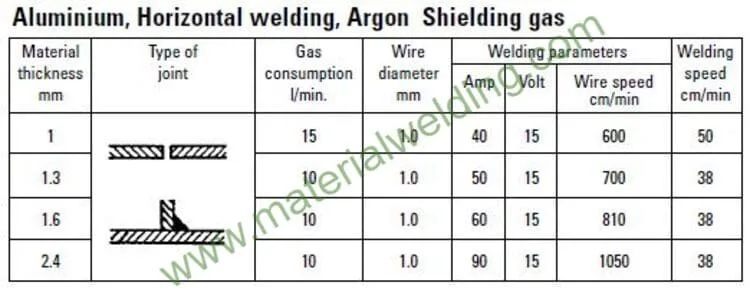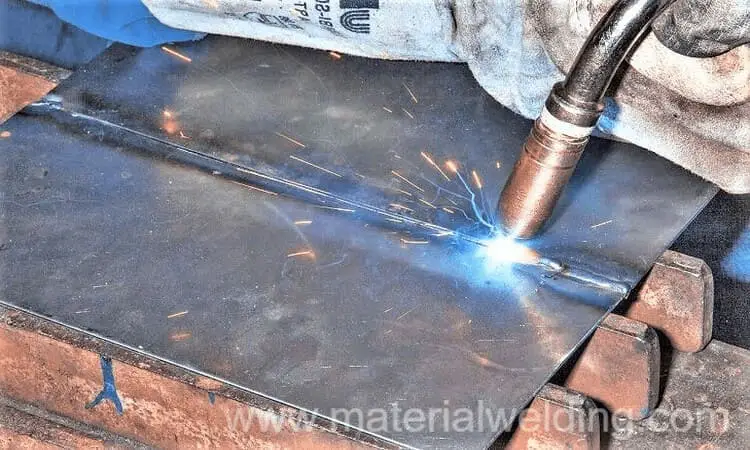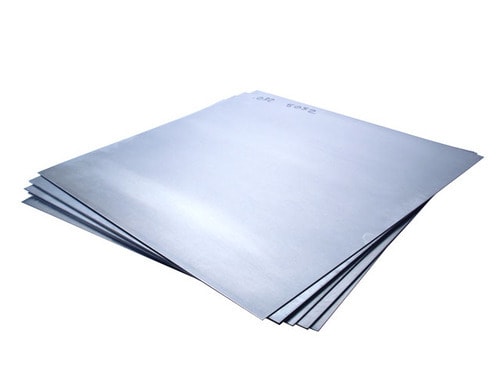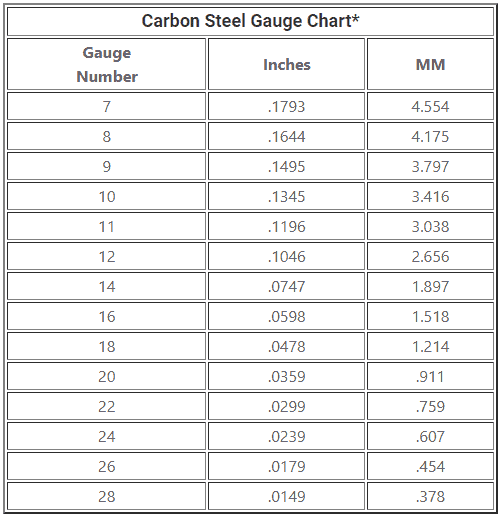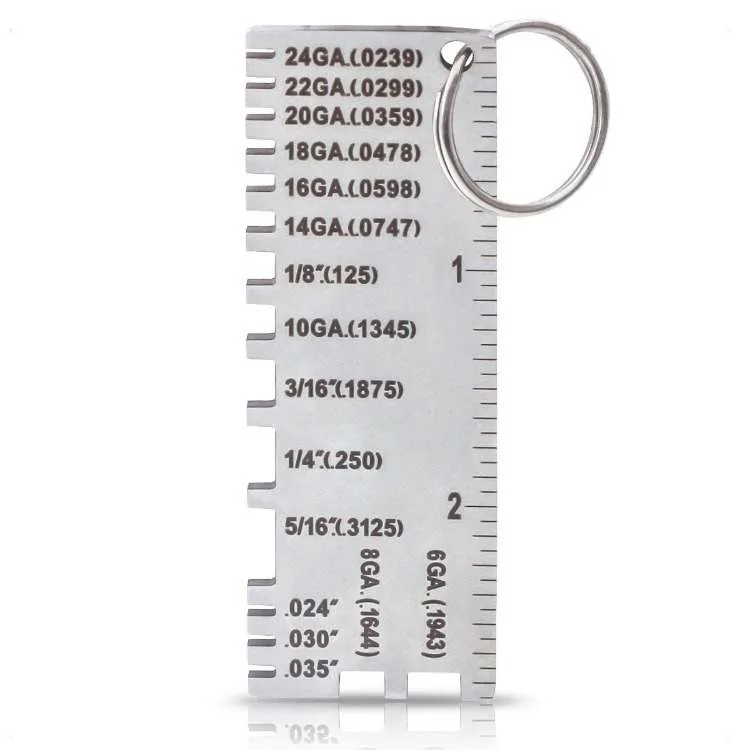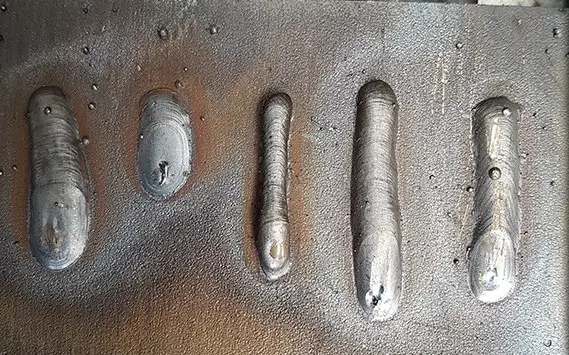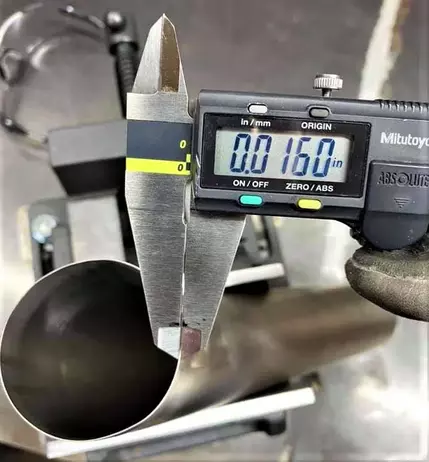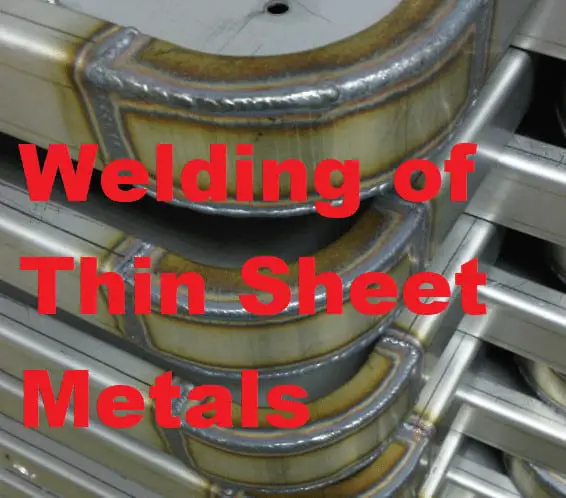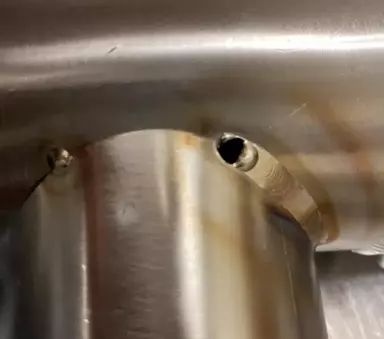Sheet metal is a thin and lightweight material used in many products, including car bodies, appliances, and aircraft. However, welding sheet metal can be challenging due to its low thickness and high heat conductivity.
To make the task easier, many welders use Metal Inert Gas (MIG) welding, which is known for its speed and precision.
However, setting up a MIG welder for sheet metal welding can be tricky, and choosing the right settings is critical to achieving a strong and durable weld.
In this blog post, we will explore the key factors that affect MIG welding sheet metal, including wire size, gas selection, amperage, and voltage.
We will also provide tips and best practices to help you achieve optimal welding results. So, whether you are a beginner or an experienced welder, read on to learn more about MIG welding sheet metal settings.
Related Reading: How Thick are Gauge Steel sheets-Do You Know?
What is MIG Welding and How it works?
MIG (Metal Inert Gas) welding, also known as Gas Metal Arc Welding (GMAW), is a welding process that uses a continuous wire electrode and a shielding gas to fuse two pieces of metal together.
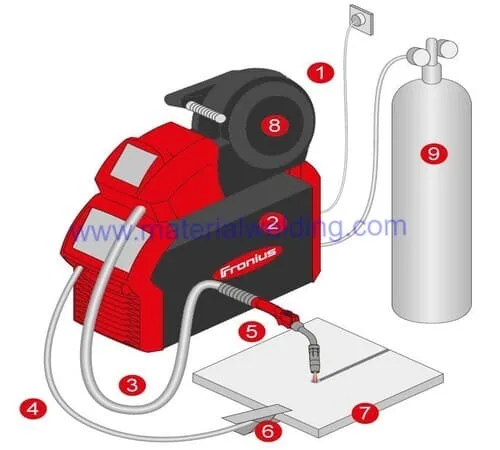
(1) Mains connection
(2) Power source
(3) Hose package
(4) Ground cable
(5) Welding torches
(6) Ground terminal
(7) Workpiece
(8) Filler material
(9) Inert gas
Here is how it works:
- The first step is to prepare the metal pieces that need to be welded. The metal surfaces must be cleaned and free from rust, oil, or any other contaminants that can affect the welding process.
- The next step is to set up the MIG welding equipment. This includes the welding machine, the wire feeder, the welding gun, and the gas supply.
- The wire feeder pulls the electrode wire from a spool and feeds it through the welding gun. The wire is usually made of steel or aluminum and is coated with a flux that protects the weld from contamination.
- The welding gun is then held by the welder, who directs the wire electrode at the joint to be welded. The welder also adjusts the angle and position of the welding gun to ensure that the weld is of high quality.
- As the wire electrode is fed through the welding gun, an electric arc is created between the wire and the metal being welded. The arc generates heat, which melts the wire electrode and the base metal, fusing them together.
- The shielding gas is released through the welding gun to protect the weld from the surrounding air. The gas also helps to create a smooth, clean weld.
- The welder then moves the welding gun along the joint, continuing to feed the wire electrode and creating a continuous weld.
Setting the right MIG welding Parameters?
In contrast to manual arc welding and TIG welding, MIG/MAG systems require only two adjustments to set up.
Related Reading: Best Welding Rod for Thin Sheet Metal Welding
These systems use constant voltage power sources, where the desired voltage can be selected by setting a specific characteristic on the rough and fine step switches for the power source.
The most appropriate arc can be achieved by adjusting the wire feed speed parameters.
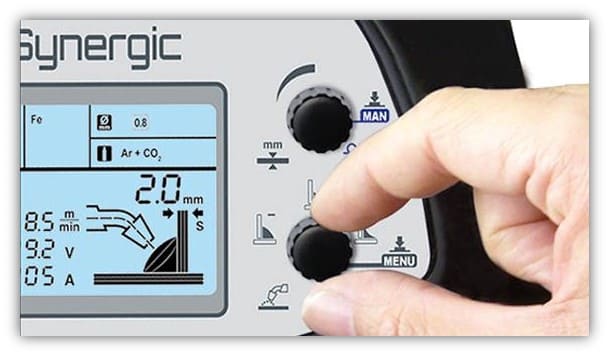
In some industries, there may not be enough skilled welders available. To address this issue, modern MIG/MAG systems have simplified Synergetic Setting of MIG welders.
To operate the system, the user only needs to adjust the touch controls to select the material being welded, the required wire diameter, and the shielding gas.
This will activate the pre-programmed optimal working characteristic.
Setting the MIG welder
Setting up a MIG welder involves adjusting several parameters, such as the wire feed speed, voltage, and shielding gas flow rate, to match the welding requirements of the specific job.
These parameters can vary depending on the type and thickness of the metal being welded, the type of wire and shielding gas used, and the position of the weld.
Related Reading: Sheet Metal Welding Guide: Weld 16, 20 and 25 or other Gauge Sheet Metal
Properly setting up the MIG welder is essential to produce high-quality welds and avoid issues such as weld spatter, poor penetration, or weld porosity.
- Select the appropriate wire and shielding gas based on the metal being welded.
- Insert the spool of wire into the wire feeder and feed the wire through the liner.
- Connect the ground clamp to the workpiece and the welding gun to the wire feeder.
- Set the welding machine to constant voltage mode and adjust the voltage & Amperage according to the recommended settings shown in the below chart for the metal and wire being used.
- Adjust the wire feed speed to achieve the correct amperage for the weld.
- Test the welder by making a test weld on a scrap piece of metal to ensure the settings are correct.
- Make adjustments as needed to achieve the desired quality of the weld.
Below a table outlining the relationship between MIG welding current and wire diameter:
| Wire Diameter (in) | Current Range (A) |
|---|---|
| 0.023-0.025 | 30-90 |
| 0.030 | 40-145 |
| 0.035 | 50-180 |
| 0.040 | 70-200 |
| 0.045 | 80-250 |
| 0.047-0.062 | 100-380 |
MIG Welding sheet metal settings with Charts
Find below the MIG Welding Sheet Metal Settings Chart which displays the recommended settings for welding different gauge thicknesses of sheet metal.
To ensure optimal results, select the appropriate gauge thickness and refer to the corresponding joint gap, wire diameter, amperage, and voltage setting for your weld.
These settings are crucial for achieving a strong, quality weld that meets your specific project requirements.
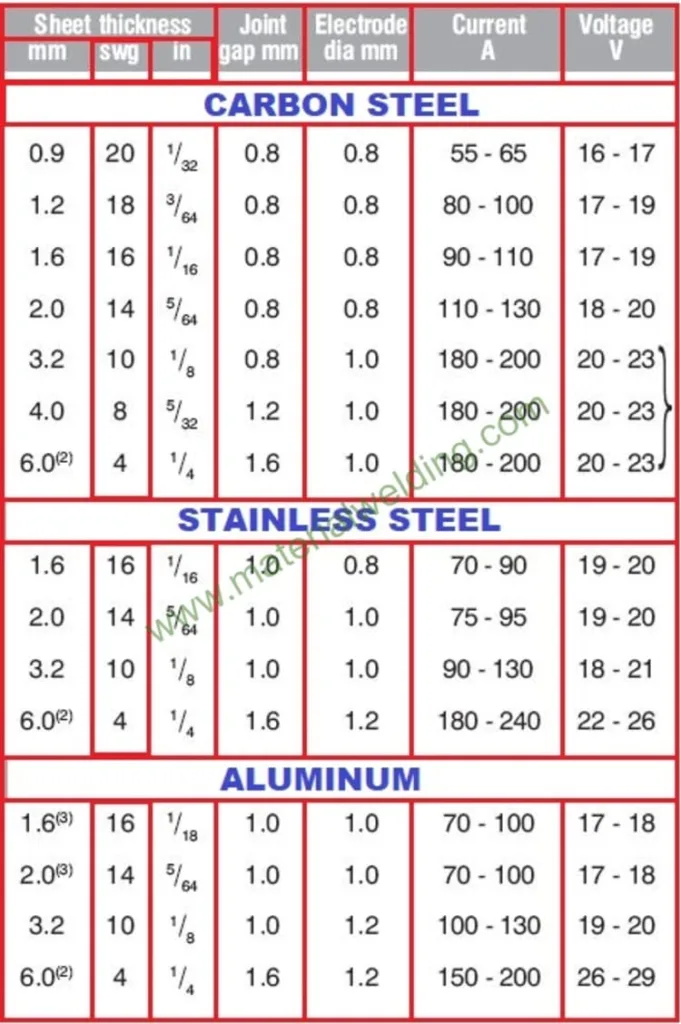
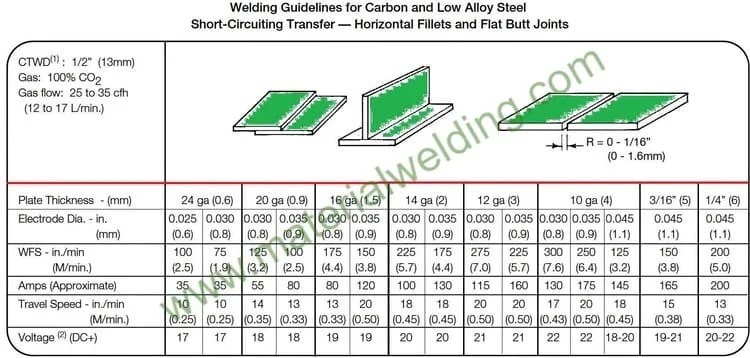
MIG welding Aluminum sheet metal settings with Chart
Below is the MIG Welding Aluminum Sheet Metal Settings Chart which displays the recommended settings for welding aluminum sheet metal.
Aluminum is a unique material to weld and requires special settings compared to other metals.
The chart provides the recommended settings for different thicknesses of aluminum sheet metal.
